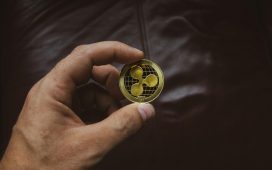Receive free EU-China relations updates
We’ll send you a myFT Daily Digest email rounding up the latest EU-China relations news every morning.
Imports from China to the EU, including of sensitive technology and critical minerals, have increased in recent years, despite lawmakers’ attempts to “de-risk” economic links amid deteriorating diplomatic relations with Beijing.
Brussels labelled China a “systemic rival” in 2019 after trade tensions between the two economic superpowers increased. However, Eurostat data shows that the value of goods coming from the world’s largest exporter almost doubled between 2018 and 2022.
During the first half of this year, China has remained by far the largest supplier of goods to the EU.
An OECD analysis shows imports of items such as phones, computers and machinery have all risen sharply over the period despite EU officials’ concerns that China could use the technology to procure state secrets. China is also the EU’s largest supplier of rare earths and other critical raw materials.
“China has very successfully convinced the major industrial economies to put many of their eggs in the Chinese basket . . . it is devilishly difficult to fully extricate themselves from their predicament,” said John Blaxland, professor of international security and intelligence studies at the Australian National University.
The China problem has drawn concern from officials in Brussels. EU trade commissioner Valdis Dombrovskis told the Financial Times in an interview published on Monday that the “staggering” deficit between the EU and China underscored the need for Beijing to open its markets.
“The China-EU trading relationship is very imbalanced,” said Dombrovskis. “The level of openness from the Chinese side is not the same as the level of openness from the EU side.”
Yet EU officials increasingly accept that breaking ties with an economy that accounts for 14 per cent of global goods exports will prove difficult.
European Commission president Ursula von der Leyen acknowledged this year that the bloc could not fully “decouple” from trading with Beijing. It would instead “de-risk” its economy by producing goods deemed important for national security within the EU.
A summit of EU leaders last month concluded that Brussels and Beijing would “continue to be important trade and economic partners”, despite the bloc reducing “critical dependencies and vulnerabilities”. The EU did not intend to “turn inwards”, the statement said.
“Decoupling is not feasible, short of war,” said Blaxland.
However, OECD figures show the US has made far more progress in becoming less reliant on its main economic rival.
Between 2018, when then-president Donald Trump imposed 25 per cent tariffs on $34bn-worth of Chinese imports, and 2022, US Trade data show the share of imports coming from China fell from 21 per cent to 16 per cent.
Despite a more co-operative tone, President Joe Biden has not removed the trade barriers, and the declines have continued this year, according to Census Bureau data.
But US companies’ ties may still be closer than the official data suggests. Chinese businesses used as suppliers before the tariffs were introduced have since moved parts of their operations elsewhere in Asia to comply with the rules.
“All we know from that data is that the source of final assembly before it comes to the United States is changing,” said Chad Bown at the Peterson Institute for International Economics think-tank. “It could be the same firms that were doing that final assembly in China are now just doing it in Vietnam or Cambodia or Bangladesh or Thailand instead.”
Some analysts said the EU had stepped into gaps left by the US, after Beijing lowered tariffs directed towards European countries in response to the US trade war.
European carmakers’ sales to China have boomed since US companies were shut out of the market. Last year alone, the relationship was worth €24bn.
The greatest threat to this business may come not from trade wars, but the rise of Chinese carmakers — a sector that is becoming so successful it is taking European manufacturers’ market share at home and abroad.
Three of Europe’s best selling electric vehicles last year were Chinese imports, accounting for 3-4 per cent of total European car registrations — up from zero a few years ago.
Sales of Chinese-made cars in Europe could reach 1.5mn vehicles by 2030, equivalent to 13.5 per cent of the EU’s 2022 production, according to Allianz.
De-risking vs decoupling
According to Chatham House’s Marianne Schneider-Petsinger, de-risking refers to “targeted action for a very narrow set of sensitive technologies that are crucial for national security” and is focused on “reducing excessive dependencies through diversification” to build greater national resilience.
Decoupling implies something far broader, such as the sweeping 25 per cent tariffs that the US imposed on Chinese imports in 2018.
Schneider-Petsinger said that from China’s perspective, the use of decoupling or de-risking “doesn’t really matter because what they hear is containment”.
France has responded by introducing legislation to only pay subsidies for new EVs based on the emissions of their producers, which will hit Chinese carmakers that rely on electricity largely powered by coal.
Germany, the bloc’s car powerhouse, unveiled its “de-risking” strategy last month, with foreign minister Annalena Baerbock warning companies to reduce their dependence on China or “bear more of the financial risk themselves”.
“The debate in Germany is shifting quite rapidly towards a much more critical and concerned attitude towards trade and investment in China,” said Marianne Schneider-Petsinger, project director at Chatham House’s Global Trade Policy Forum. “But at the same time, there is a difference between firms on the ground and the government.”
Additional reporting by Sam Fleming in Brussels and Martin Arnold in Frankfurt








